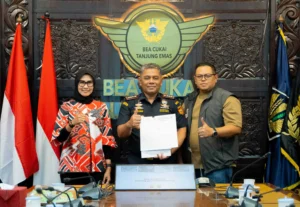Importing Goods Process, Methods, and Requirements
Diposting pada Maret 5, 2024 oleh Nur Wachda Mihmidati

Importing goods is a key element in the global supply chain that allows companies to acquire goods from international markets for sale or use in the production process. However, the process of importing goods is often complex and requires a good understanding of the requirements, regulations and steps involved.
In this article TransTRACK, we will explore the key steps in the goods import process, from planning to receiving the goods. By having a good understanding of this process, companies can optimize their supply chain, reduce risks, and improve operational efficiency.
Let’s explore deeper to understand how you can better manage the process of importing goods for the success of your business.
What is the Goods Import Process?
The process of importing goods involves several complex steps, mainly depending on the country of origin and the country of destination, as well as the type of goods to be imported. However, in general, here are the common steps in the process of importing goods:
Research and Planning
Identify the goods to be imported and ensure that they meet the requirements of international and domestic trade regulations. This includes determining tariffs, taxes, and other special requirements that may apply to certain types of goods.
Ordering and Purchasing
Place an order for goods from a supplier or manufacturer in the country of origin. Be sure to arrange payment terms, delivery terms, and necessary documentation.
Transportation
The goods will be delivered via an appropriate transportation route, such as sea, air, or land. This requires logistical arrangements, including packaging, shipping, and insurance of the goods.
Inspection and Documentation
Imported goods will go through an inspection process at the destination port or airport. The necessary import documents, such as commercial invoices, packing lists, and import permits, must be properly prepared.
Payment of Duties and Taxes
Imported goods are subject to import duties, import taxes, and other charges that may apply in accordance with international and domestic trade regulations. Payment shall be made in accordance with applicable regulations.
Customs Release
Once duty and tax payments are made and all import documents are approved, the goods will be released from customs and can be picked up by the importer.
Distribution and Storage
Imported goods will then be distributed to their final destination or stored in warehouses as needed.
Monitoring and Compliance
Importers are responsible for ensuring that all import requirements and regulations are met. This includes monitoring changes in international and domestic trade regulations and maintaining compliance with them.
This process of importing goods can vary in complexity and time depending on factors such as the type of goods, country of origin, country of destination, and regulations and policies in place at any given time.
How to Import Goods?
How to import goods involves a series of steps that must be followed carefully to ensure the process goes smoothly. Here are the general steps:
Research and Planning
Identify the goods to be imported and make sure you understand the applicable import requirements. This includes determining import duty rates, taxes, as well as any other special requirements that may apply to certain types of goods.
Choose a Supplier
Find a supplier who can provide the goods you need at an appropriate quality and competitive price. Be sure to evaluate the supplier’s reputation and product quality before making a purchase decision.
Negotiation and Ordering
Negotiate with the supplier on pricing, payment terms, delivery terms, etc. Once an agreement is reached, place an official order and make sure to get written confirmation.
Shipping Arrangements
Decide on the most suitable shipping method for your goods, whether by sea, air, or land. Also organize the shipping logistics, including packaging, insurance, and shipping documents.
Document Preparation
Prepare all documents required for the import process, such as commercial invoices, packing lists, certificates of origin, import permits, as well as other documents that may be required by customs and trade control authorities.
Import Declaration
Submit complete information about your imports to the customs authorities or relevant agencies in the destination country. This includes submitting import documents and paying applicable import duties and taxes.
Customs Inspection
Imported goods will go through an inspection process by the authorities at the destination port or airport. Be sure to fulfill all requirements and follow the instructions provided.
Receiving and Distribution
Once the goods have passed inspection and the import license is granted, you can receive the goods and distribute them to their final destination according to your pre-arranged plan.
Monitoring and Storage
Monitor the condition of the goods once they arrive at their destination and make sure to store them properly if necessary. This includes maintaining inventory records and ensuring the safety of the goods.
Compliance and Reporting
Comply with all applicable import regulations and policies, and make sure to submit the required import reports to the authorities according to the set schedule.
Understanding and following these steps will help you execute the goods import process efficiently and minimize risks and obstacles that may arise during the process.
By understanding the steps involved in the goods import process, you can ensure the smooth operation of your business. However, managing imports efficiently requires the right support. With TransTRACK’s Logistic Service Integrator services, you can better optimize your supply chain.
With our solutions, you can access a comprehensive range of logistics services, from shipment setup, real-time monitoring, to import document management. Using advanced technology and our global network of partners, we ensure your shipments arrive on time and in a cost-effective manner.
Don’t let the complexity of the import process hinder your business growth. Gain a competitive advantage by using TransTRACK’s Logistic Service Integrator. Contact us today to get started!
Postingan Terbaru
Over Dimension Overload, Bagaimana Peraturan, Akibat, dan Solusinya?
Desember 18, 2025Topik :
 English
English









